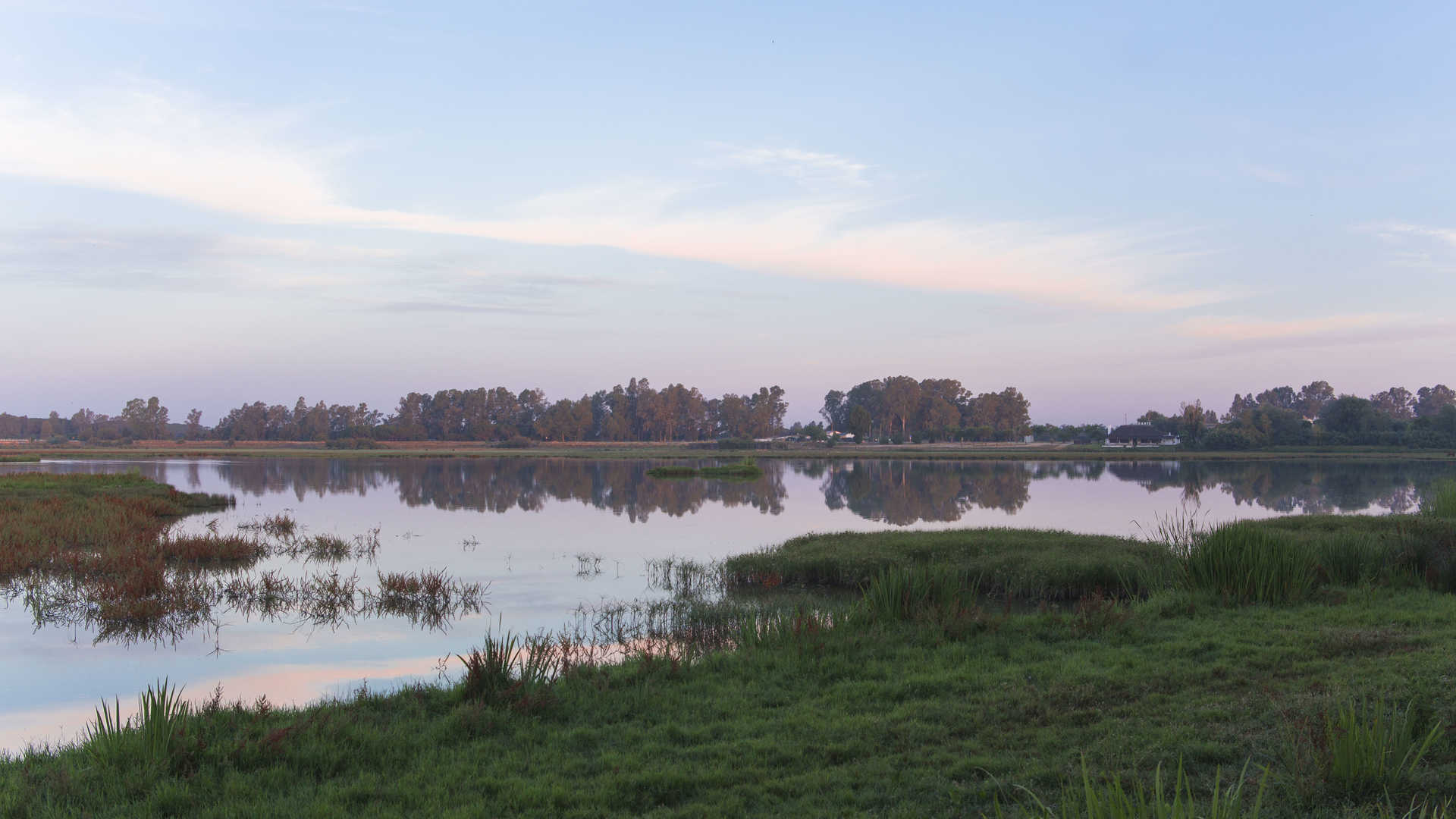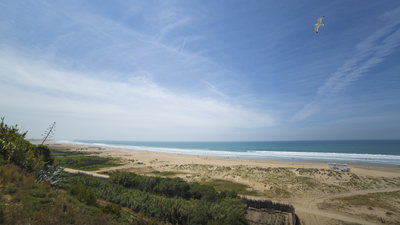Doñana, beyond the lynx

Access the Doñana National Park and explore the immense natural treasure hidden inside. Marshes, mobile dunes and animal species that are unique in the world.
By land or water: Choose your adventure!
The Doñana National Park is huge, almost 110,000 hectares of protected area. Exploring these distances along dunes and aquifers is not a task for amateurs, so there are several alternatives for visiting the area. One of them is the unmistakable 4x4 in the park. From the El Acebuche Visitor Centre, huge green vehicles take you into the protected area, beginning at the Matalascañas Beach. The route includes a tour of the park's four ecosystems: the dunes, the marsh, the reserves and the river bank.
The other is to navigate to the mouth of the Guadalquivir on-board the Real Fernando ship, which raises anchors near the old Ice Factory of Sanlúcar de Barrameda, and surrounds a large part of the park. Both routes are led by marvellous guides who will narrate all of the park's secrets. You choose how you want to see Doñana. Or you can try both, that depends on you.
Beach, mobile sand dunes and the sand dunes "corrales". Be mesmerised by the unique adaptation of the plant species in Doñana.

Although the marsh is the most widespread ecosystem in Doñana, the dune system doesn't lag much further behind. Did you know that the dunes move forward? Thanks to the prevailing southwest wind, locally called the "foreño”, the sand of the crests moves at an average speed of between three and six metres annually. The highest dune, with a height of 35 metres above sea level, is called Cerro de los Ánsares.
From here, you may observe one of the park's many natural phenomena: the "corrales". These are small pine forests that make use of the moving dunes to grow while the dune advances. When the dune completely covers them, these leave way for the famous "cross fields”, the skeletons of the old pine trees peering out from the sand.
An even more unusual fact. Do you know the tree that "surfs” the dunes? The sea juniper, to avoid the destiny of its fellow pines, coils its roots to remain afloat while the dunes move and unscrews them when there is no danger.
Curiosity:Look closely at the sand. The dunes are like a book that tell the story of the movement of the area's wildlife.
Discover the marshes and hallucinate with their variety of aquatic birds.
Doñana is the largest wetland in Western Europe. Currently the park's marshes fully depend on rainfall to flood themselves, and are dry for half of the year, so they only provide shelter for hundreds of aquatic bird species when the offspring are born and during winter. Unpack your camera because you will see flamencos, storks, grey herons, glossy ibis, night herons and many other species that are unique to the area.
There are more native protagonists: the marismeño horse breed, adapted to life in aquifers. Furthermore, in the reserves it is usual to come across large mammals like deer and their brothers, the fallow deer. This is where, with much luck, you can see one of the famous Iberian lynx.

The town of La Plancha. Discover how the park's personnel used to live.
Doñana has more surprises. On the banks of the Guadalquivir, not far from Sanlúcar de Barrameda, is the old inhabited area of huts of la Plancha, where in the past some families who worked for the Dukes of Medina Sidonia lived. In 1969 it was declared a National Park, and the locals were allowed to conserve their huts.
Spectacular sunrises and sunsets in El Rocío and Matalascañas. Sunbathe at the very mouth of the Guadalquivir.
A great incentive of this area are its sunrises and sunsets. Because the area is flat, these can be seen in their full splendour.
El Rocío has a spectacular sunrise. Just opposite the village is a marsh that reflects the entire landscape, and where aquatic birds of all types can be easily seen. In addition, the place has a fantastic dusk from the other side, with theMarismeño horse breed in the background.
If you are looking for the ideal light to take photos, visit Matalascañas and watch the sunset from its beach. The image with the fishermen in the background is quite authentic. With a bit of luck, you can contemplate flocks of birds flying in formation flight.
A final visit to keep in mind: Sanlúcar de Barrameda is located at the end of the Guadalquivir. It is a coastal town with a charming old town. The Plaza del Cabildois a good stop to take a break and eat something. If it's hot, you can swim at the mouth of the river itself.


























